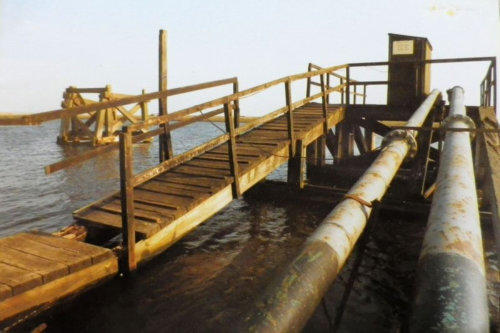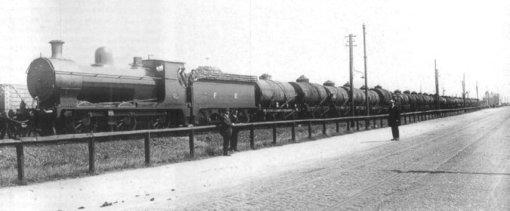ISLAND INDUSTRIES
Shipbuilding, now the premier industry in Barrow, grew massively from very humble origins. It began on Barrow Island,
(where it ended up), with William Ashburner, who served his time as a carpenter at Petty & Postlethwaite's Ulverston
shipyard. After a sojourn in the Isle of Man, he returned to Barrow in 1847 to set up his own shipbuilding and repair
business. At that time, "There were no other works of any kind," in the area.
1
Ashburner laid down his first slip on Old
Barrow opposite where the DDH ship lift is now and was joined in 1850 by his brother Richard, who had experience of
building wooden ships at Greenodd. In 1852 they had completed their first ship, a 95-ton schooner the 'Jane Roper'. Their
second ship the 'John Roper' (1857) was slightly bigger at 108 tons, but was eclipsed by the third, the 'Lord Muncaster'. Built
in 1859 she staked her claim to fame in 1863 by making a passage from Cardiff to Lisbon in five days: nine days was
considered the norm.
In 1865 Ashburner moved lock, stock and barrel to Hindpool, where Joseph Rawlinson and James Fisher built and
repaired wooden ships, later they all moved their premises further north along the shore as the encroaching Devonshire
Dock was built.
It wasn't until 1871 that the Barrow Iron Shipbuilding Company, as usual, Ramsden's brainchild, conceived in 1869,
came into being. Folklore has it, (or it is sometimes attributed to a diary that he didn't keep), that Ramsden took the Duke of
Devonshire for a walk on Old Barrow along the shore of Walney Channel, "...to explain some of his ideas for a shipbuilding
works, and a better class of housing, that would be needed for the workers." [What?]
2
Incidentally, he also convinced the
Duke of Devonshire to part with pots of lucre to turn his idea into reality. If his ideas were not so good, history might have
remembered him as a con-man.
TIMBER
David R. Charles of Hull and West Hartlepool was the first to set up a timber yard on the east side of Barrow Island, but
they only stored the imported timber for trans-shipment.
It was Price, Potter & Walker who were the first to
introduce Barrow island to the delights of the Industrial
Revolution when they rented 20 acres to open a saw-mill with
£10,000 worth of machinery to produce floorboards,
scantlings and mouldings from raw timber. All the various
machines were powered by a pair of Rochdale engineer
Thomas Robinson's 25hp horizontal steam engines.
Price, Potter & Walker, who had branches in Grimsby and
Gloucester, won an order in 1867 from the Furness Railway
for nine and a half miles of railway sleepers. P.P & W were
quick to see the advantages of Old Barrow. The Furness
Railway offered temptingly cheap rents, and ideal waterside
facilities were available on the south side of what was to be
Buccleuch Dock. With a thriving customer, (again the Furness
Railway), on the doorstep, they couldn't go wrong.
In 1869 - their first year on Old Barrow, they imported
12,000 tons of timber from Norway and Sweden, for use as
pit props in the local mines and elsewhere. Just four years
later by 1872, imports had dramatically increased to 80,000
tons.
From his prestigious office address on the Strand,
Richard Potter was hatching ambitious plans. In 1871 he was
holding discussions with Ramsden, Devonshire and the
Furness and Midland Railway Committee with a view to
forming a £600,000 shipping company to trade with Canada.
Potter as Chairman of the Canadian Grand Trunk Railroad
already had links with Canada, but his main interest in
Canada was, of course, their massive timber exports.
Attempts were made to entice shipowner James Little &
Henderson's 'Anchor Line' into the scheme, to the tune of
£100,000 each. Eventually, the others became suspicious of
Henderson's motives as he already used his ships on the
Canadian routes and seemed to stand to gain much more
than the rest of the plotters. Discussions irretrievably broke down in an air of mutual distrust in January 1872.
Although this venture came to nought, it demonstrates how a company could come to Barrow, then just two years later
be financially strong enough to play with the big boys. But, like a lot of Barrowvian industrial stars of the era, they burnt
brightly for a relatively short time only to fizzle out; or be swallowed up by a more vigorous Stella Nova.
Richard Potter, never one to hide his light under a bushel, was plotting again a couple of years later. This time Ramsden
was on the receiving end of a proposal to import live cattle from the States. Ramsden was quite taken with the idea: but not
with Potter. In 1878 Ramsden entered into a provisional
agreement with the Merchant Trading Company of Liverpool,
for the Furness Railway to build cattle sheds on Ramsey
Island and elsewhere on Ramsden Dock property. This
scheme was the start of another one that, at best, would only
be partially successful.
In the 1890's Price, Potter & Walker closed their yard in
Barrow, perhaps to get the maniac Potter away from
Ramsden. The timber yard was taken over by J.F. Crossfield
who at the time was expanding, (so the reason P.P&W left,
was not for lack of trade). Crossfield traded until the Second
World War when they were squeezed out by Vickers who took
over the land as part of expansion plans for their ship fitting
out berths.
BRICKS
Besides his adventures in bricks, land speculation and property, William Gradwell, was one of Barrow's most prolific
builders, he also owned a timber business.
3
Gradwell started his career as a builder at Roose in 1845, then established his first saw-mill at Hindpool in 1855. Later,
when Devonshire Dock was completed, he moved his business to land on Old Barrow adjacent to Devonshire Dock at Crow
Nest Point. There Gradwell built joinery shops and a smithy with two steam hammers, lathes and drilling machines. Also, a
steam saw-mill and steam crane, "The whole forming the largest timber building and contracting establishment in North
Lancashire."
4
Two of Gradwell's nice little earners were telegraph poles and railway sleepers. Both, of course, are exposed to
the elements all their working lives and failure of either can have dire consequences. To protect the precious wood, Gradwell
installed an 'apparatus for kyanising'. The timber was put into pressure vessels then creosote was forced into the grain of the
wood under 150psi; a similar process is still used today.
Messers Burt, Bolton & Haywood bought the yard after Gradwell's death and were Barrow's leading importers of timber
until the 1960s when they too ceased trading.
OIL
Today we cannot imagine a world without oil. Without ample supplies of 'Black Gold,' the modern world would quickly
grind to an abrupt halt. A few dollars rise on the Amsterdam spot market is enough to affect, in one way or another, every
living person on the planet, (except a few Amazonian tribesmen and the odd Innuit indian).
From the price of petrol to the cost of paper, oil influences the economy in a thousand different ways. It is a jealously
guarded and finite commodity; wars are fought for it, and men risk life and limb to extract it from the bowels of the earth:
but this wasn't always so.
Until its properties as a lubricant were realised, animal fats were used. It wasn't until the 19th century, by a process of
distillation could it be turned into a combustible fuel suitable for[ use in the newly invented diesel and petrol internal
combustion engines.
The Barrow Shipbuilding Company were slow to get orders for 'Oil Tankers,' a new type of vessel. The first and only one
to be built in the 19th century, the 'Hainaut' was ordered by R. Speth & Co. A 1,760 tons gross sailing ship it was launched in
1887 and is noted as still being in service sixty four years later in 1951, although I suspect as a storage hulk.
It wasn't until 1915 that the next tanker was built at Barrow when the Vickers-built 'Santa Margherita' took to the
waves.
The potential of acres of unused land on Ramsden Dock
did not go unnoticed by the up and coming oil companies.
Land earmarked in 1885 for a cattle market, (the site of the
British Gas Condensate Terminal), had by 1889 been taken by
the 'Barrow Petroleum Storage Company' who were busily
building a tank farm and cooperage. This investment aimed at
the developing bulk petroleum trade with Russia by importing
spirit from Batoum on the Black Sea to Barrow, where it would
be stored and barreled for sale. The business seems to have
been successful, after erecting six tanks of 2,500 tons capacity
they added another two smaller tanks in 1894.
By the turn of the century, Big Brother in the shape of
Asiatic [later Shell] Petroleum, B.P. and the Anglo-American Oil
Co., were taking a keen interest in this growing market. And
what an ideal site the now underused docks were, did not
escape their attention. The Barrow Petroleum Storage
Company were quickly overtaken by the big guns of the oil industry. Early in the 20th century Asiatic, Anglo-American, B.P.
and Anglo-Mexican Oil Co., all had storage facilities on Barrow Island. Anglo-American used and expanded Barrow
Petroleum's ready-made facilities, the others leased land and built their own.
Asiatic Petroleum not only erected a tank farm, they also
built a house in its own grounds on a hill overlooking the
works and Ramsden dock. Then they added a row six terraced
cottages known respectively as Aureool House and Aureool
Terrace. In passing, the unusual name chosen for these
buildings bears looking at. According to the Oxford English
Dictionary, the word Aureool does not exist, but Aurora was
the Roman goddess of the dawn, associated with the Greek
god Eros. The derivative aureole describes a halo of firelight or
sunlight. Asiatic Petroleum's sphere of operations was related
to the Far East - the 'Land of the Rising Sun' etc., I can only
assume it is an odd spelling of 'aureole'.
Aureool Terrace became a victim of the Luftwaffe
destroyed by a landmine on the 8th May 1941, luckily with no
fatalities. Aureool House survived for another forty years
before being demolished by British gas to make way for the
Condensate Terminal.
As demand for fuel increased rapidly during World War
One Shell built a small refinery on the banks of the Timber
Pond behind, where now, there are allotments. The refined
spirit was distributed by a fleet of small road tankers,
precursors of the monsters that now trundle around the
country. Some remnants of the refinery still survived until
recent regeneration work buried the lot, for ever. The brick
building, which was just beyond the allotments was the boiler
house. The foundations of the refinery buildings together with a
World War Two gun emplacement could be traced, until not too
long ago, among the brambles that mark the untended
graveyard of another of Barrow's still-born children.
Shell, having absorbed the Asiatic and Anglo-Saxon Oil
Companies, was expanding rapidly after World War One. So
much so they outgrew Barrow and 1924 moved to Stanlow on
the Wirral where they now have one of the largest refineries in
the country. Yet another magnificent industrial defeat snatched
from the jaws of victory.
The oil companies had two rail depots on the docks. The
one used by Anglo-Mexican Oil was on the north-eastern side
of the condensate plant and has completely disappeared,
buried under spoil dumped when the 'Oil Wells' was converted
into the condensate terminal and now overgrown. The other,
known as Dockyard Junction was until its demolition in 2014
was still in use, albeit for different purposes, housing Gilbert
Machine Tools and Empat Removals. B.P. used the station as a
depot for several years to load and unload bulk spirit. They also
barreled spirit and sold it to the public in two-gallon cans. The
depot was connected to B.P.'s private berth in Ramsden Dock
by part of the dock rail network that ran from the main-line
round the Timber Pond to the Anchor Line basin. Another spur
ran back to the Oil Wells and yet another ran under Ramsden
Dock Road Bridge to Ramsden Dock Station and to the
workshops in the Harbour Yard.
Between them by 1918, the oil companies had a storage
capacity of 50,000 tons, not an awful lot by today's standards-
barely half an average tanker full. However, the affordable
motor car was now a reality, and petrol consumption was
rocketing. In the 1920s B.P. extended their premises building a
tank farm behind, [what is now ], St Andrews Engineering's
workshop, (also demolished in 2014).
B.P. was the last to abandon Barrow Island and turn their
attention to more important things elsewhere. The jetties in
Ramsden Dock were still used from time to time, and aviation
fuel was stored in the underground tanks in World War II. But
as usual, Barrow had missed the boat and a second Dallas it
would never be.
The discovery of the Morecambe Bay Gas Fields has
brought a new lease of life to the site previously occupied by
the infant oil companies. In 1983/84 the tanks were brought
into line with today's specification and modern mechanical and
electronic equipment installed to accept, store and trans-ship
condensate extracted from gas processed at Rampside. So
after a gap of many years, tankers are again calling at
Ramsden Dock, this time to export fossil fuel by-products.
Reflections of an industry now gone.
On the right (above) the condensate loading berth, a new use for the old oil wells tank farm.
Right: The old oil off/on loading jetty
A train of endless oil tanks passes the Dock Road 1912.
FOOTNOTES
1. James Fisher’s Diary.
2. qv. Huts page.
3. It is a pity Gradwell wasn't such a prodigious builder of homes for his many workers. In 1876 twenty huts at
Salthouse occupied by Gradwell's employees were condemned by the nuisance Inspector. His verdict on the accommodation
was, "They would not make bad stables... if properly ventilated and drained."
4. Richardson; Barrow, its rise and development.
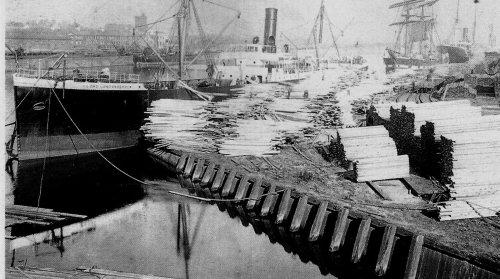
Crossfields


Ship unloading at PP&W berth
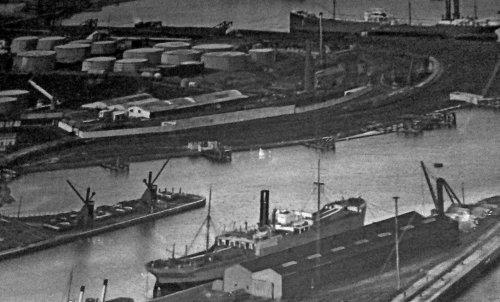
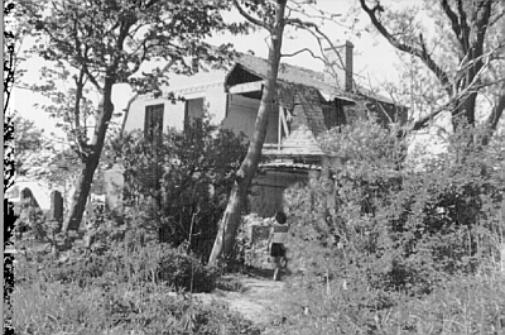
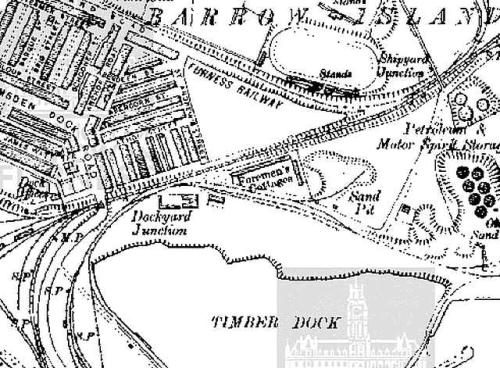

Dockyard Junction
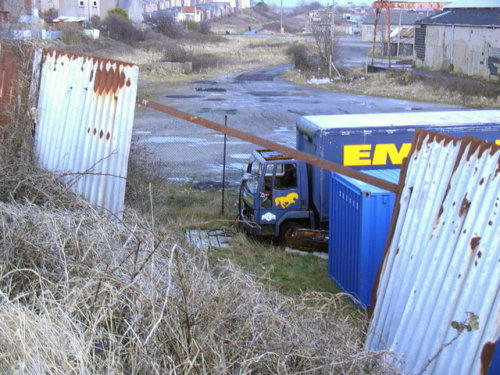
Before the site was completely cleared

All gone.

